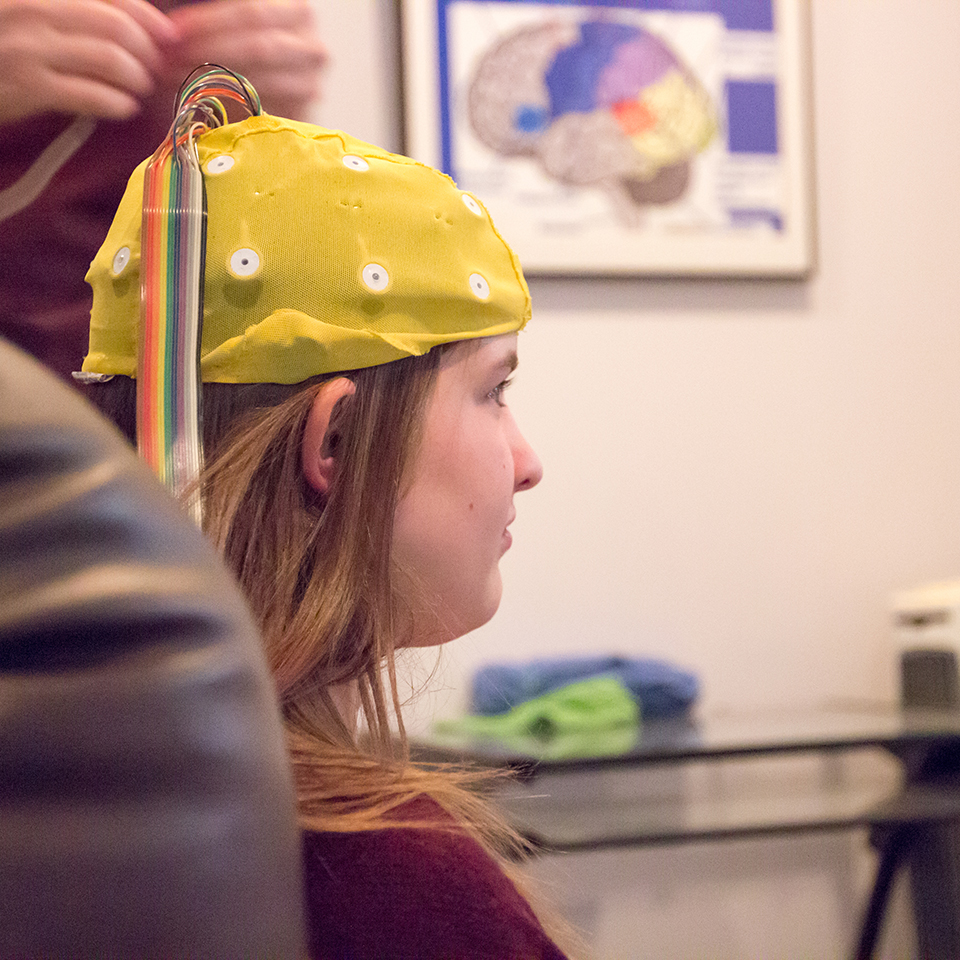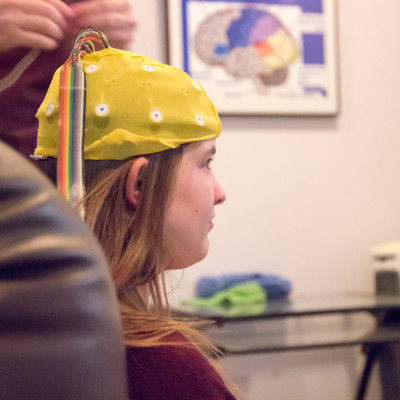
Mind & Motion offers qEEG brain mapping as a tool to evaluate patients with a variety of psychoneurological disorders by measuring electrical activity in the brain. This evaluation serves as a basis for identifying fluctuations in brain functioning that are associated with different types of psychoneurological disorders such as:
- Attention Deficit Disorder (ADD)
- Autism
- Learning Disabilities
- Depression
- Dementia
- Mild Head Injury
- Addictions
- Obsessive/Compulsive Disorder (OCD).
Using qEEG brain mapping as a diagnostic tool helps our specialists get a better understanding of our patients’ needs, and allows us to determine the best course of treatment for them moving forward. More specifically, a detailed brain map directs us in our Neurofeedback treatments for various psychoneurological disorders.
What is qEEG Brain Mapping?
Quantitative Electroencephalography (qEEG) Brain Mapping is a procedure that records electrical activity that is produced from the brain by sensors attached to a cap, placed on the head. This procedure is supported by evidence-based research. This tool is utilized to measure the speed and processing efficiency of neuronal brain functioning and can be used to evaluate a person’s brain waves.
qEEG vs EEG
What is the difference between qEEG and EEG? Simply put, the difference is the letter q. This letter stands for quantitative, which means that, unlike a standard EEG, qEEG provides a statistical analysis of the recorded brain activity. An EEG records electrical activity in the brain, while a qEEG allows us to quantify, analyze, and therefore better understand this information in context. This is why qEEG is often referred to as “brain mapping.” Having this map provides us with better information as to where we need to go, and this is no different when it comes to understanding and treating the brain.
The qEEG procedure takes activity recorded during an EEG and processes it on a computer using algorithms to analyze the information, often comparing it against a database of normed EEGs. Essentially, while an EEG can show brain activity, a qEEG can quantify this brain activity and compare it to other EEGs, often controlled for factors such as age and gender. By comparing brain activity to a large, normed database, we can more easily identify and better understand any psychoneurological issues that are present.
Is qEEG Right for Me?
A qEEG evaluation can be a very valuable tool in helping you toward feeling better. If you struggle with a psychoneurological disorder, having a brain map can provide specialists with the information they need to get you the best treatment.
The procedure takes about 30 minutes, and is completely safe, painless, and noninvasive. You will only have to sit quietly while the cap measures your brain activity, and will be given simple instructions, such as being asked to open or close your eyes. The sensors inside of the cap used to perform the test are only used to measure brain activity, and do not alter or affect your brain in any way.
If you’d like to learn more about qEEG, or if you’d like to schedule an appointment, you can get in touch with us here.




